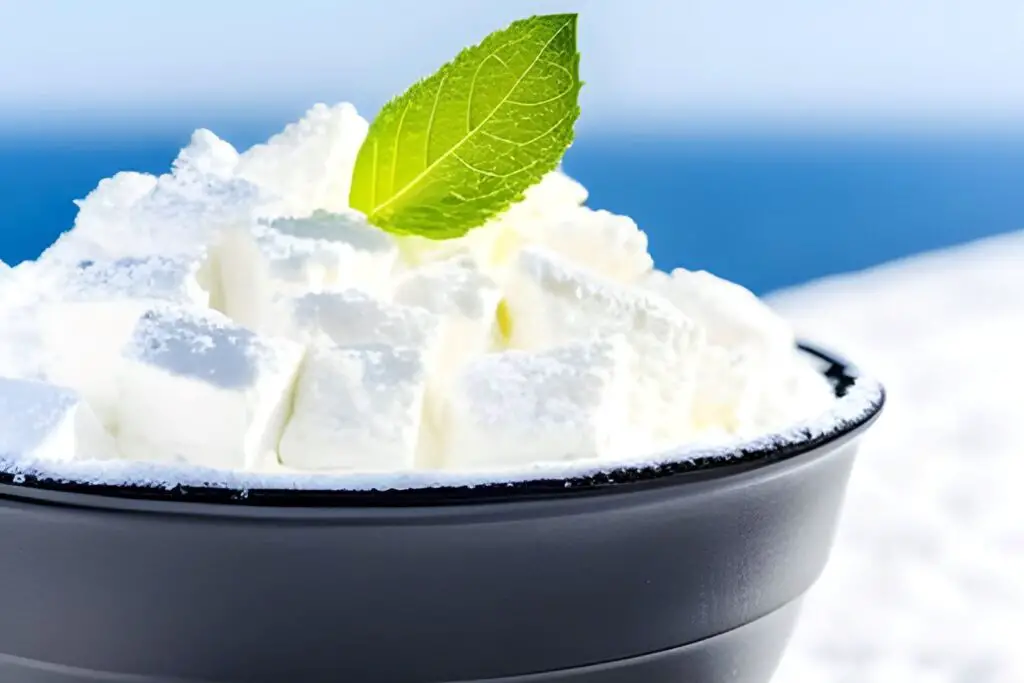
Yogurt is a creamy and nutritious dairy product that has been enjoyed for centuries, known for its tangy flavor and smooth texture. Made from the fermentation of milk with beneficial bacteria, yogurt is packed with probiotics, protein, calcium, and other essential nutrients. It is a versatile ingredient that can be enjoyed on its own, added to smoothies, used as a topping for granola or fruit, or incorporated into various recipes.
If you have extra yogurt that you want to prolong its shelf life or wish to prepare yogurt-based treats in advance, freezing can be a convenient option. Freezing yogurt allows you to preserve its freshness and extend its usability, ensuring that you have a cool and refreshing treat on hand whenever cravings strike. In the following section, we will explore the process of freezing yogurt and provide tips for maintaining its texture and taste after thawing.
Here are the steps to freeze yogurt:
Step 1: Choose the right yogurt.
When it comes to making frozen yogurt, using plain yogurt is preferable to flavored or fruit yogurts for a few reasons.
Firstly, plain yogurt has a simpler ingredient list and typically contains fewer additives or sweeteners, making it a healthier option.
Secondly, plain yogurt freezes better than flavored or fruit yogurts. This is because the additional sugars and flavors in flavored yogurts can interfere with the freezing process and cause the frozen yogurt to become icy and crystallized. The simpler composition of plain yogurt allows for a smoother and creamier frozen texture.
Lastly, Greek yogurt is a good option for making frozen yogurt because it has a thicker consistency due to the straining process it undergoes. This thicker consistency helps to create a creamier and more decadent frozen yogurt, similar to the texture of traditional ice cream.
Step 2: Measure out the yogurt into the desired portion sizes.
Portioning the yogurt is an important step in making frozen yogurt. It ensures that the frozen yogurt will freeze evenly and allows for easy serving once frozen. There are a few different options for portioning the yogurt.
Small containers, such as ramekins or small jars, are a good choice for portioning yogurt. These containers come in a variety of sizes and are readily available in most kitchen supply stores. They are easy to fill and can be stacked in the freezer for efficient use of space.
Another option for portioning yogurt is to use silicone molds. These molds come in a variety of shapes and sizes and can be found at most kitchen supply stores. They are especially useful for creating fun and creative frozen yogurt treats for kids. The silicone molds are also easy to pop out once the frozen yogurt is set.
Step 3: Place the yogurt portions into the freezer for at least 2-3 hours.
After portioning the yogurt, the next step is to freeze it. Freezing the yogurt allows it to solidify and create the desired frozen yogurt texture. The yogurt portions should be placed in the freezer and left to freeze for at least 2-3 hours. The freezing time may vary depending on the size of the portion and the temperature of the freezer, so it is important to check on the yogurt periodically.
Once the yogurt is frozen, it can be removed from the containers or molds and transferred to a freezer-safe container or a resealable freezer bag. This helps to keep the frozen yogurt fresh and prevent freezer burn.
How can I prevent the yogurt from crystallizing when freezing it?
To prevent yogurt from crystallizing when freezing, it’s important to remove as much air as possible from the container and store it in airtight packaging. This can be achieved by using a vacuum sealer or pressing plastic wrap tightly against the surface of the yogurt before sealing the container. It’s also recommended to freeze the yogurt in smaller portions to minimize the amount of time it takes to thaw, which can reduce the formation of ice crystals. Additionally, stirring the yogurt periodically during the freezing process can help to distribute the moisture evenly and prevent crystallization.
Step 4: Label the container with the date and contents.
Labeling and dating the frozen yogurt containers or bags is an important step to keep track of the contents and storage time. When labeling the container or bag, be sure to include the date of freezing and the contents of the package. This will help you to know how long the frozen yogurt has been stored and what it contains.
Step 5: Thaw the yogurt.
There are several methods to thaw frozen yogurt, depending on how much time you have available and personal preferences. The easiest way to thaw frozen yogurt is to transfer the container or bag from the freezer to the refrigerator and let it thaw for a few hours or overnight. This gradual thawing process ensures that the yogurt will retain its creamy texture and prevent the formation of ice crystals. If you are short on time, you can use the defrost setting on your microwave to thaw the frozen yogurt. Be sure to place the yogurt in a microwave-safe dish and use the defrost setting instead of the regular heating setting, as the latter can cause the yogurt to overheat and curdle. Microwave the frozen yogurt in 30-second intervals, stirring between each interval, until it has thawed completely.
Alternatively, you can also use the water bath method to thaw frozen yogurt quickly. Simply fill a large bowl with warm water and submerge the frozen yogurt container or bag in it. Be sure to seal the container or bag to prevent water from seeping in. Stir the frozen yogurt occasionally until it has thawed completely.
Other related questions
How long do you freeze yogurt in the freezer?
Yogurt can be frozen for about 1-2 months. Freezing helps extend its shelf life, but it can alter the texture and consistency. To freeze yogurt, transfer it to airtight containers or freezer bags, leaving some room for expansion. Seal tightly and label with the freezing date. Thaw frozen yogurt in the refrigerator for a few hours or overnight before consuming. While the texture may change to a slightly grainy or separated state, it is still safe to eat. Frozen yogurt is best used in smoothies, baking, or as a chilled treat rather than for direct consumption.
Can I refreeze the yogurt after it has been thawed?
While it is generally safe to refreeze yogurt that has been thawed, it’s not recommended. The texture and taste of the yogurt may be negatively affected by the repeated freezing and thawing process. Additionally, refreezing can create an environment that is conducive to the growth of harmful bacteria, which can lead to foodborne illness. It’s best to only thaw the amount of yogurt that you plan to consume and avoid refreezing it if possible. If you do decide to refreeze yogurt, be sure to do so as soon as possible after it has thawed and store it properly in the freezer.
Can I use my frozen yogurt with the fresh one?
Yes, you can use your frozen yogurt with fresh yogurt, but it’s important to keep in mind that frozen yogurt may have a different texture and taste than fresh one. Additionally, if the frozen yogurt has been thawed and refrozen multiple times, it may have deteriorated in quality and should be consumed with caution. Mixing the frozen and fresh yogurt together can help to balance out any differences in texture or flavor, but it’s ultimately up to personal preference.
How do I know if my frozen yogurt has gone bad?
You can tell if frozen yogurt has gone bad by examining its appearance, texture, and smell. If the yogurt appears discolored, has ice crystals or freezer burn, or has a sour smell, it may have gone bad. Similarly, if the texture is grainy or icy, it may indicate that the yogurt has deteriorated in quality. When in doubt, it’s best to err on the side of caution and dispose of frozen yogurt that you suspect may be spoiled. Consuming spoiled yogurt can lead to foodborne illness and should be avoided.
How to prevent the yogurt from separating when frozen?
To prevent yogurt from separating when frozen, it’s important to stir it well before freezing to ensure that the texture is consistent throughout. Adding a small amount of cornstarch or guar gum can also help to stabilize the yogurt and prevent separation. It’s also recommended to use full-fat yogurt, as low-fat varieties are more prone to separating. Additionally, using an airtight container and minimizing the amount of air exposure can help to prevent crystallization and separation.
Can you freeze yogurt in its original container?
While it is possible to freeze yogurt in its original container, it is not recommended. Freezing yogurt in its original container can cause the container to crack or break due to the expansion of the yogurt as it freezes. Additionally, the container may not be airtight, which can cause freezer burn and affect the quality and taste of the yogurt. It’s best to transfer the yogurt to a freezer-safe, airtight container before freezing.
How does freezing affect the nutritional value of yogurt?
Freezing can cause minor changes to the nutritional value of yogurt, but the impact is generally minimal. Some vitamins and minerals may be slightly reduced during the freezing process, but the overall nutritional profile of yogurt remains largely intact. It’s important to note that flavored yogurts may contain added sugars or artificial ingredients that can affect their nutritional value, regardless of whether they have been frozen or not. When freezing yogurt, it’s best to choose plain varieties and store them properly to preserve their nutritional benefits.
Can I add fruit or toppings to yogurt before freezing it?
Yes, you can add fruit or toppings to yogurt before freezing it, but it’s important to keep in mind that some ingredients may not freeze well and can affect the texture and taste of the yogurt. Fresh fruit or toppings that contain a lot of moisture, like honey or jam, may cause ice crystals to form and make the yogurt icy or grainy. To avoid this, it’s recommended to freeze the yogurt in its plain form and add toppings or fruit after it has been thawed. Alternatively, you can try blending the fruit or toppings into the yogurt before freezing to create a smooth consistency.
Can I use frozen yogurt in smoothies?
Yes, frozen yogurt can be used in smoothies as a healthy and delicious alternative to ice cream or frozen fruit. Using frozen yogurt in smoothies can add a creamy texture and tangy flavor while providing the nutritional benefits of yogurt. It’s important to ensure that the frozen yogurt has been properly thawed before blending to achieve a smooth consistency. Additionally, adding fresh or frozen fruit and other ingredients can help to enhance the flavor and nutrition of the smoothie.








